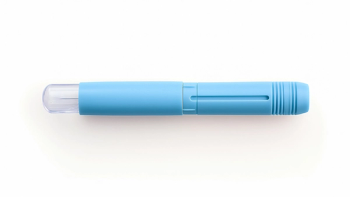
- Applied Clinical Trials-06-01-2010
- Volume 0
- Issue 0
Biosimilars Make Headway
The 12-year data exclusivity period has significant implications in delaying the launch of biosimilars.
Biopharmaceuticals are predicted to soon make up 50% of new drug approvals. With the increasing use of biologics in hard to treat disease areas such as rheumatology, oncology, and other chronic diseases, there has been significant interest in the field of biosimilars, known as "biogenerics," "follow-on proteins" or "follow-on biologics."
Biosimilars are new but not identical versions of biopharmaceutical products that have reached patent expiry. This is in contrast to generics, defined by the FDA as drugs that are identical or within an acceptable bioequivalent range to the small molecule innovator drug, with the same dose, strength, safety, efficacy, intended use, and method of administration.
Pablo Fernandez
Biologics are more difficult to replicate, as they are developed from larger living organism cells and have higher molecular complexity. As new manufacturers cannot access the cell bank, molecular clone or the exact fermentation and purification process used to develop the original innovator product, biologicals cannot be identically replicated. They must go through clinical trials to eliminate concerns that they might perform differently than the original product.
In 2006, the EMA became the first regulatory body to legalize a pathway for biosimilar approval, providing 10 years of patent protection to biologics. A legal pathway for biosimilars is now part of the new health care reform legislation signed into law by President Obama in March of this year. FDA is now able to produce the regulations that will guide development and registration of biosimilars.
In the first six months of 2009, the research-based pharmaceutical industry spent around $609,000 a day lobbying to influence this legislation. Probably as a result of this, the new legislation allows 12 years of data exclusivity for the original manufacturer of the biologic, with the possibility of an extension by two years following the approval by FDA of a further indication for use of the product. The legislation also demands at least one clinical trial to demonstrate safety and efficacy, but it allows interchangeability once this is achieved.
As discussed at the World Generic Medicines Congress in London, this 12- year data exclusivity period has significant implications in delaying the launch of biosimilars and faced fierce opposition during the debates in both the Senate and Congress. Most generic manufacturers insisted that a shorter exclusivity period would have been needed to make biosimilars financially viable; however, drug innovators argued that they need the proposed 12 years in order to recoup their investment.
Henry Waxman, cooriginator of the Drug Price Competition and Patent Term Restoration Act of 1984, which was designed to promote generics while ensuring financial incentives for R&D, spoke by video link at the conference. Waxman stated his commitment to lobbying for a reduced data exclusivity period for biologics, as well as locking abusive "evergreening" in which pharma companies make inexpensive minor tweaks to products to receive longer data exclusivity.
In the meantime, a possible way of gaining regulatory approval for biosimilars in the United States is to submit to FDA for BLA evaluation the data gathered for a successful EU application. It has been reported that a generics manufacturer may have recently done just that, and that FDA has accepted that dossier for evaluation. The industry is currently waiting to see whether this is possible and if a swifter release of biosimilars to the U.S. market can be expected.
Pablo Fernandez, LMS, FFPM
Senior Vice President
Medical Affairs
PharmaNet
Articles in this issue
over 15 years ago
Applied Clinical Trials Digital Edition - June 2010over 15 years ago
Business and News Update June 2010over 15 years ago
Electronic Integration Costsover 15 years ago
Strategic Immunogenicity Testingover 15 years ago
ePRO vs. Paperover 15 years ago
Today's Global Site Landscapeover 15 years ago
Changing Medicines, Changing Rulesover 15 years ago
Ethics Diversity Persistsover 15 years ago
Mastering Currency Fluctuationover 15 years ago
Just Breathe: COPD, Asthma FutureNewsletter
Stay current in clinical research with Applied Clinical Trials, providing expert insights, regulatory updates, and practical strategies for successful clinical trial design and execution.





.png)



.png)



.png)
.png)
